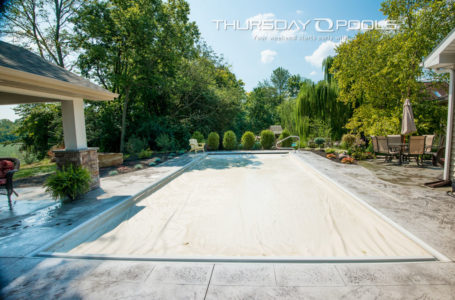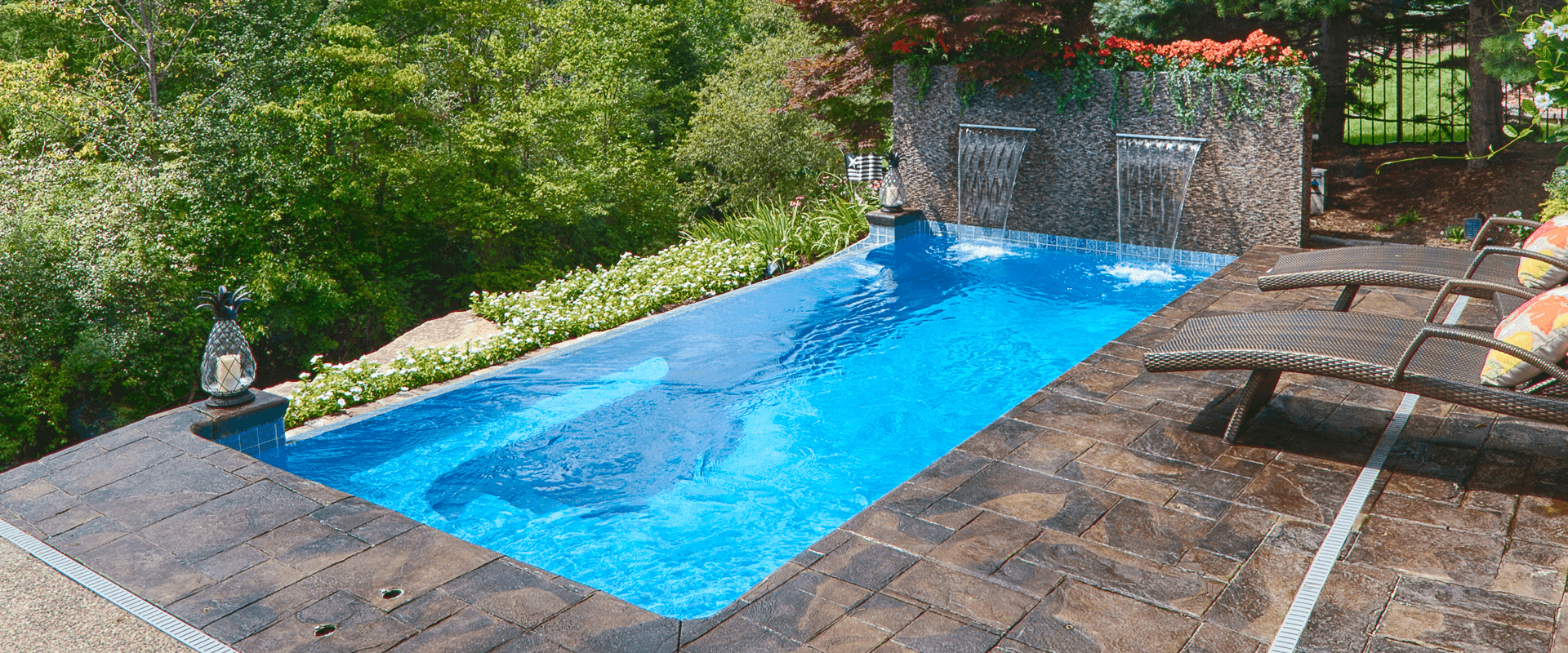877-929-(7665)
How To Close An Inground Pool
 For some, it’s a season of denial, but when that first multi-hued leaf hits the water, it’s hard to ignore the reality that it’s fast becoming time to close the pool. If you’re in a temperate climate, you’ll want to winterize your pool to set yourself up for continued enjoyment when the weather is warmer. Whether closing an above-ground pool or an inground pool, many of the same principles apply. However, your regimen and costs may vary if you are closing a vinyl or gunite inground pool. For a more in-depth comparison of fiberglass vs vinyl vs gunite, download our free eBook. In this post, we will cover how to close an inground pool that is fiberglass.
For some, it’s a season of denial, but when that first multi-hued leaf hits the water, it’s hard to ignore the reality that it’s fast becoming time to close the pool. If you’re in a temperate climate, you’ll want to winterize your pool to set yourself up for continued enjoyment when the weather is warmer. Whether closing an above-ground pool or an inground pool, many of the same principles apply. However, your regimen and costs may vary if you are closing a vinyl or gunite inground pool. For a more in-depth comparison of fiberglass vs vinyl vs gunite, download our free eBook. In this post, we will cover how to close an inground pool that is fiberglass.
STEPS TO AN INGROUND FIBERGLASS POOL CLOSING
-
- Set a date. Get it on your calendar, and if you need to get on the schedule for pool service, it’s wise to make an appointment as early as possible before the time slots fill up.
- Balance your water chemistry. Even if you’ve hired a pool service company, there are likely tasks you should perform in advance. One is making sure you’ve established proper water chemistry. That includes checking and balancing for alkalinity, pH, free chlorine, calcium hardness, salt, stabilizer, metals, and dissolved solids. Note: the “eyeball test” will not cut it. Water that is pristine in appearance can still be harmful or out of balance. That’s why we test. Keep in mind that balance also refers to the neutrality of the water, meaning you don’t want water that is too acidic (can cause corrosion) or too basic (can cause scaling/deposit buildup). Your Thursday Pools Owner’s Manual is a great resource for recommended water chemistry levels.
NOTE: do not treat your fiberglass pool with calcium hypochlorite because the percent of free chlorine is so high that it can damage the pool surface. - Wipe down the scum line. Otherwise known as the “water line” or “tile line,” the “scum line” is a result of body oils, lotions, and environmental contaminants that float on the surface of pools and leave a mark that is usually harmless but doesn’t look good. This blemish could become a bigger problem if left unattended. Note: Be gentle. Use a light touch with a wiping cloth or brush – don’t scrape – to preserve the gel coat of your pool.
- Clean. Give your pool a final skim, vacuum, clean the filter baskets, and backwash the filter before the pool service company arrives. (The General gave us a good primer on backwashing and the ins and outs of a sand filter)
- Add winterizing chemicals. Add the final chemicals in your winterizing process the day before your service company arrives, allowing time for the chemicals to take effect before their arrival. If your water is properly balanced, no additional chlorine is necessary. With no swimmer use and cooler water temperatures, chlorine demand over the winter months remains very low.
- Tidy up. We’ve talked mostly about chemicals up to this point. Organize and store those chemicals tightly and securely in a well-ventilated space, with special care not to place caustic chemicals too close to each other. In addition, tidy up your pool accessories, toys, and furniture. This could include pulling out ladders, diving boards, and other fixtures and checking them for wear and tear. If you have a secured or immovable element, like a slide, it’s a good idea to give it a protective wax that will set it up for continued use in the spring.
- Cover it. We recommend automatic pool covers for safety, security, and pool hygiene. If you get an automatic pool cover, you will be pleased with its contribution to a quality pool closing.
FAQ. A lot of new customers ask, “Should I drain my inground pool for the winter?” The answer is absolutely not. You risk structural damage if you drain your pool of water. Professional pool installers take great care to reduce the abundance of hydrostatic pressure from groundwater, but it is always there, and water in the pool counterbalances that external pressure. Recent technological innovations can lessen the impact of groundwater.
If you must remove some water from your pool or if water is captured on top of your pool cover, drain it away from the deck, and be careful to leave water in the pool above the skimmer level. If you absolutely must drain the water completely from your pool, please consult with a professional. That can protect you against voiding your warranty.
HOW MUCH DOES IT COST TO CLOSE A POOL?
The cost of closing a pool will vary based on your area, but a national average is around $250. For reference, here are monthly cost estimates of pool chemicals:
- pH increaser/decreaser $10/mo
- Calcium hardness increaser $20/mo
- Stabilizer (cyanuric acid) $15/mo
- Sanitizer (chlorine) $20/mo
- Shock $80/mo
- Algaecide $12/mo
As previously mentioned, the costs will vary based on your geography, your commitment to regular maintenance, your vigilant use of a pool cover, and other factors. If you’re still pondering questions like “how much shock will I need for my pool?”, we have a guide that provides some size/cost ratios on the most used chemicals.
BOTTOM LINE
Winterizing or closing your pool for the season is part of a disciplined approach to pool ownership. The season, and a period of disuse, can have negative consequences for your pool. By keeping a regular maintenance schedule all year long and giving special attention to a proper seasonal closing, you can keep your inground fiberglass pool in good shape for many years to come.
